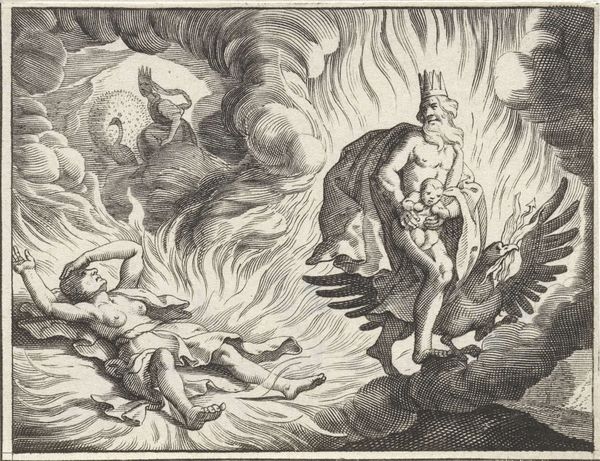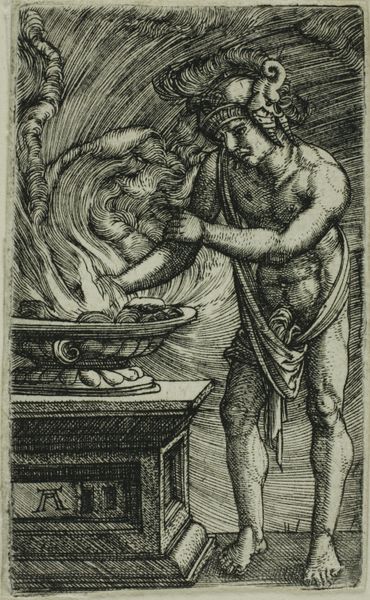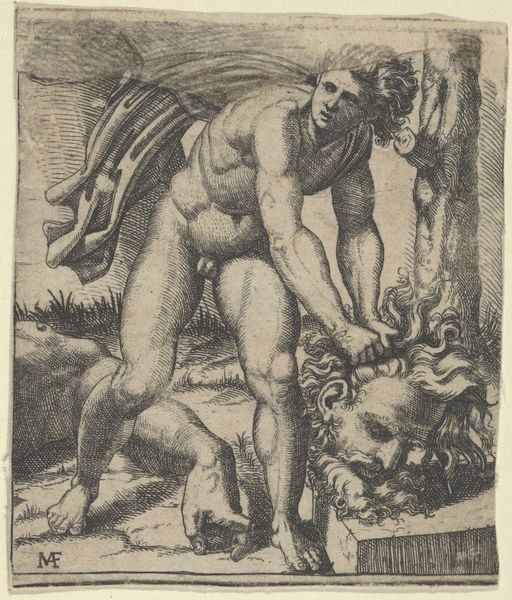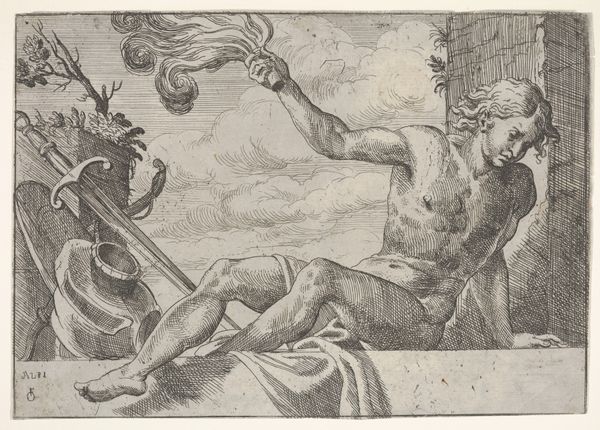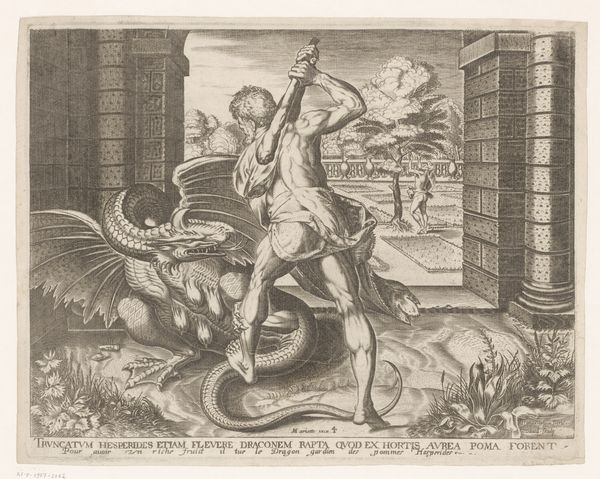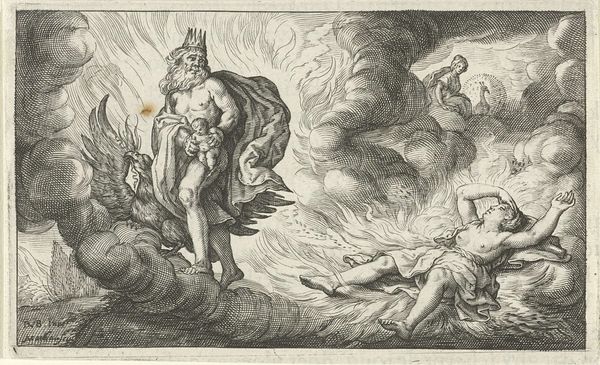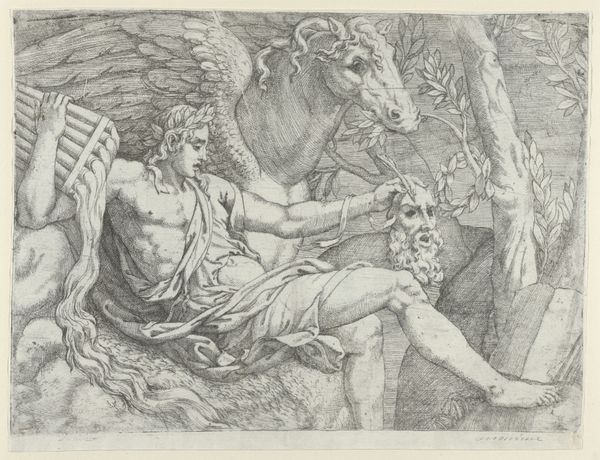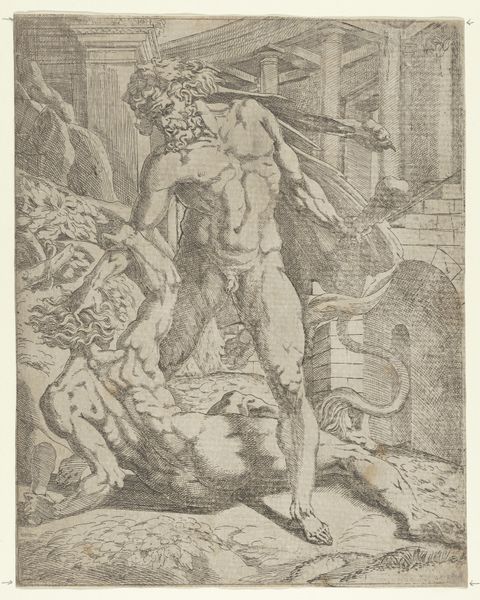
A man kneeling and placing a laurel branch upon a pile of burning books 1510 - 1532
0:00
0:00
drawing, print, engraving
#
portrait
#
drawing
# print
#
book
#
figuration
#
11_renaissance
#
men
#
portrait drawing
#
history-painting
#
engraving
Dimensions: Sheet (Trimmed): 2 1/2 × 3 7/16 in. (6.3 × 8.7 cm)
Copyright: Public Domain
Editor: This engraving, made by Marco Dente in the early 16th century, is titled "A man kneeling and placing a laurel branch upon a pile of burning books". It's… intense. The figure’s muscular, almost heroic, but the book burning is troubling. What kind of statement do you think Dente was trying to make? Curator: The image speaks volumes about the complex relationship between power, knowledge, and artistic patronage during the Renaissance. Book burnings were, of course, a recurring event in European history, often tied to religious or political repression. Consider, then, who might commission such an image, and for what purpose? Is it a straightforward endorsement of censorship, or something more nuanced? Editor: I see what you mean. Commissioning it suggests at least some acceptance of the act, but perhaps the laurel branch indicates a reluctant but necessary cleansing of ideas. Was there a particular historical event Dente might have been referencing? Curator: Several possibilities come to mind. This period witnessed both the flourishing of humanist thought and fierce religious conflict. The burning of books deemed heretical was not uncommon, especially during the Reformation. And, significantly, consider the print's destination: Who was the intended audience for such a provocative image, and what effect might it have had on public discourse at the time? What do we gain from its current location, far removed in time and place, within the Metropolitan Museum? Editor: That’s fascinating. Framing it as a question of public role changes everything. I had just assumed it was a simple declaration, but now it feels much more complex. Curator: Precisely. Art, particularly public art and printed images intended for wider circulation, exists within and actively shapes the social and political landscape. Editor: Thanks. I'll definitely look at Renaissance art with a wider perspective going forward. Curator: Remember, art doesn’t just reflect history, it actively participates in its creation.
Comments
No comments
Be the first to comment and join the conversation on the ultimate creative platform.


